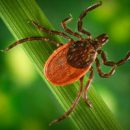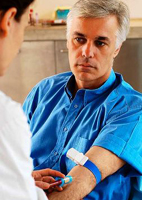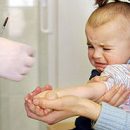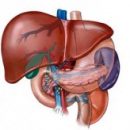Treatment of staphylococcal infection in children - a complicated procedure, but quite feasible. With light disease forms, it is possible to do symptomatic local antibiotic therapy, medium-wing and heavy options require complex therapy and versatile prevention. Article about it.
Content
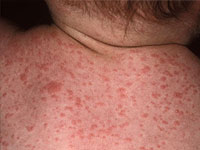 Staphylococcus infection — Pretty frequent phenomenon in children and belongs to a group of purulent-inflammatory diseases of the skin, mucous and internal organs with an air-drip and contact method of transmission. Cases of infection are explained by contact with contaminated items, use of contaminated milk or milk mixtures infected with medical staff in the conditions of the hospital or through maternal hands. It is worth noting that the fifth of the population is characterized by the carrier of golden staphylococcus, one of the most dangerous in the family of microbes having a different picture of manifestation: from purulent skin changes — Before the bone marrow, nervous system or internal organs. It is this microbe in a position to cause kids and schoolchildren the processes of suppuration, furunculese, abscesses, osteomyelitis, cystitis, pyelonephritis, endocarditis, scarletin, sophisticated inflammation and even sepsis. Given the possible manifestations and complications, when infected, it is recommended to conduct timely treatment of staphylococcal infection in children.
Staphylococcus infection — Pretty frequent phenomenon in children and belongs to a group of purulent-inflammatory diseases of the skin, mucous and internal organs with an air-drip and contact method of transmission. Cases of infection are explained by contact with contaminated items, use of contaminated milk or milk mixtures infected with medical staff in the conditions of the hospital or through maternal hands. It is worth noting that the fifth of the population is characterized by the carrier of golden staphylococcus, one of the most dangerous in the family of microbes having a different picture of manifestation: from purulent skin changes — Before the bone marrow, nervous system or internal organs. It is this microbe in a position to cause kids and schoolchildren the processes of suppuration, furunculese, abscesses, osteomyelitis, cystitis, pyelonephritis, endocarditis, scarletin, sophisticated inflammation and even sepsis. Given the possible manifestations and complications, when infected, it is recommended to conduct timely treatment of staphylococcal infection in children.
Danger of Golden Staphylococcus
The severity and form of infection in breast and newborns depends on the ways of infection, as well as from the state of the immune system of the child's body. The path of infection, as noted above, is a sick person or a bacteria carrier, which may not know about his condition, for example, a child's mother with purulent mastitis or a crack of a nipple, penette on the skin, infection in the throat, in the nose, intestine and in the vagina. Staphylococcal carriage does not have external signs and manifestations, and microbes begins after they fall into a weakened organism. Staphylococcal infection easily carries out in the hospital, where patients and healthy faces can be together, microorganisms quickly produce resistance to new antibodies and antiseptic drugs, penetrate the body, destroy the tissues and distinguish toxins that oppress the barrier forces of unstable infants immunity. Risk factors for the development of staphylococcus in children is a pathologically flowing pregnancy and anomaly of generic activities. Bacteria themselves are very resistant to the environment, viable at room temperature dozens of days, are long saved in products, but die when boiling and under the action of certain disinfectants.
More often there is a localized form of the disease, mainly with light forms of manifestation in the form of rhinitis, pyodermia, nico-pharyngitis without intoxication, there is a small subfebilitation and minor changes in blood. The occurrence of severe complications is possible in the case of the attachment of any disease, more often than viral nature. The main area of the localization of staphylococcus are leather and subcutaneous fiber, when an inflammatory focus with the suppuration and reaction of regional lymph nodes is developing very quickly, it may be lymphadenitis or lymphangitis, the newborn is diagnosed with bubble or exfoliative dermatitis. During the damage to the mucous membrane, purulent conjunctivitis or angrint occurs, the body temperature increases, the stenosis of the larynx occurs, accompanied by obstructive bronchitis and pneumonia.
In the treatment of staphylococcal infection, children should highlight light localized, medigative and severe generalized forms involving therapy in two directions: antibacterial and surgical. If in the first case you can do local symptomatic therapy, then in the case of the generalization of the process, there is a serious comprehensive treatment. First of all, it is necessary to remove the pussy and the source of the infection, in the case of a newborn it may be milk, so the mother and child should be treated. Surgical intervention is subject to any fabric highlighting staphylococcus, accompanied by antibacterial therapy. The necessary inspection and destination holds a specialist neonatologist or pediatrician. Prevention is very important in the fight against staphylococci, therefore, before childbirth, both parents need to be examined for bacteriasis, strictly observe the rules of personal hygiene, to maintain breastfeeding of a child, which will help protect and strengthen its immunity.


